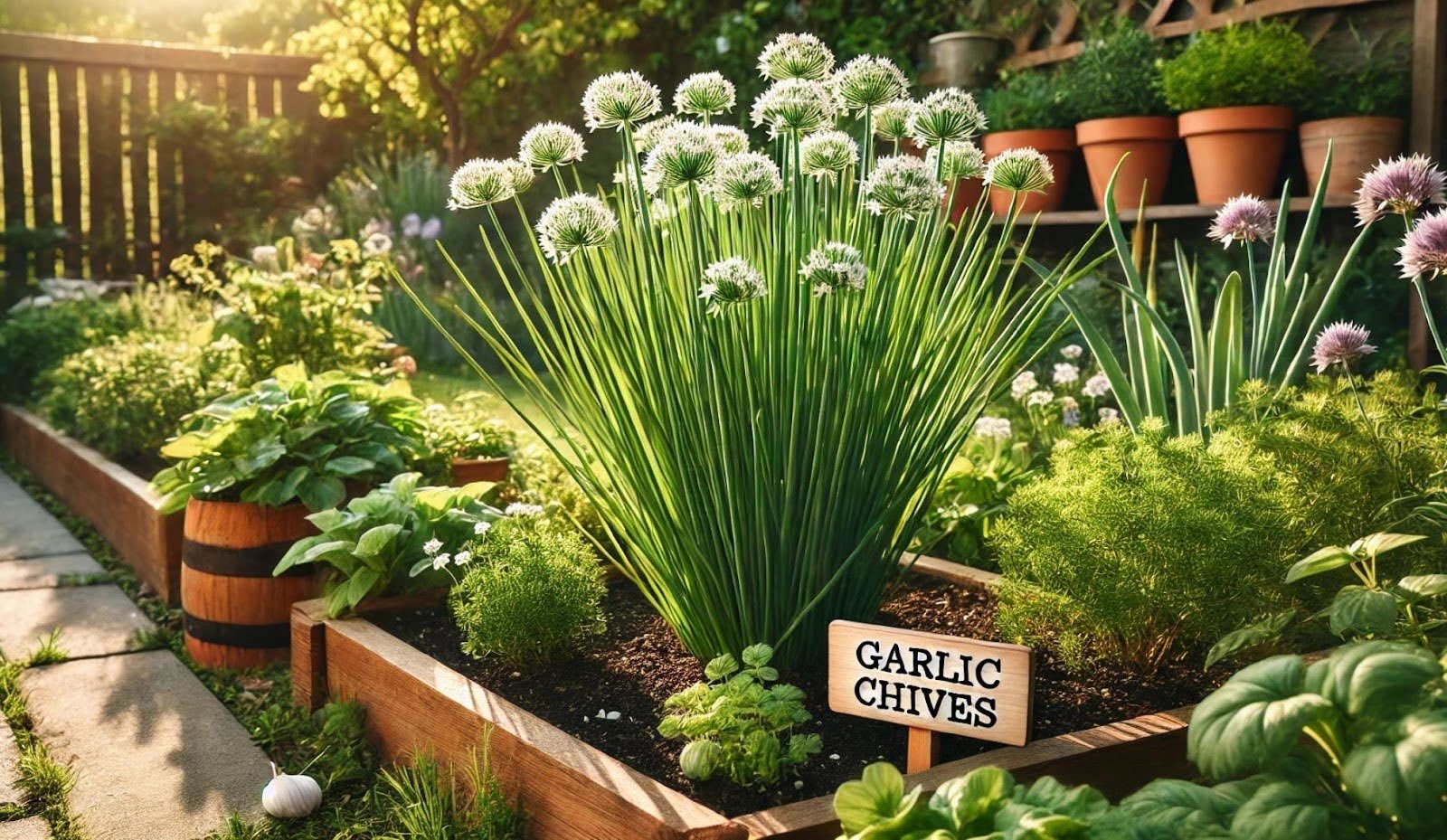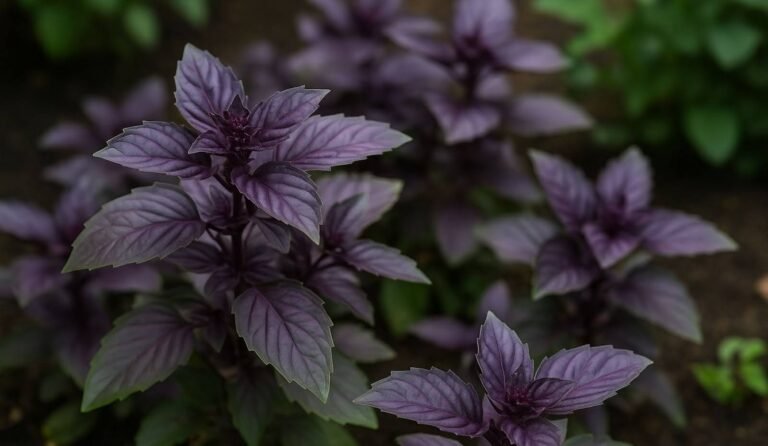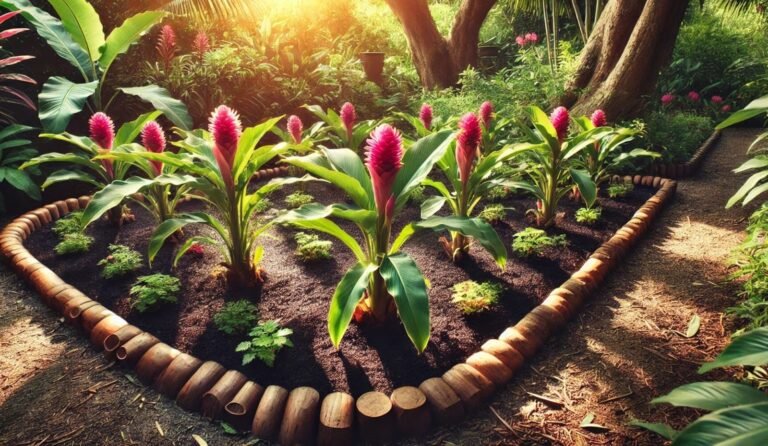Garlic Chives Plant: A Beginner’s Guide to Growing & Care
The garlic chives plant is the secret herb your garden (and kitchen) needs. With its mild garlicky kick and easy-growing nature, it’s a must-have for any herb lover. Whether you’re planting it in your backyard or a sunny windowsill, this hardy perennial thrives with little effort. Plus, it doubles as a natural pest repellent while attracting pollinators—win-win! Want to know how to grow, care for, and use it like a pro? Let’s dive in!
What is a Garlic Chives Plant?
The garlic chives plant, also known as Chinese chives, belongs to the onion family (Allium) and is closely related to onions, leeks, and regular chives. It is a perennial herb, meaning it grows back every year once established. Unlike regular chives with tubular, hollow leaves, garlic chives have flat, grass-like leaves that release a mild garlic aroma when crushed.
Native to Asia, garlic chives have been used for centuries in cooking and herbal medicine. They produce small white flowers in late summer, which not only look beautiful but also attract pollinators like bees and butterflies to your garden. The plant is incredibly resilient and can thrive in various growing conditions, making it an ideal choice for both beginner and experienced gardeners.
Benefits of Growing Garlic Chives Plant
1. Easy to Grow and Maintain
Garlic chives are one of the easiest herbs to grow. They require minimal care and can thrive in both garden beds and containers. Whether you have a spacious backyard or a small apartment, you can grow them successfully with little effort.
2. Adds Flavor to Your Cooking
If you love cooking, you’ll appreciate the unique flavor of garlic chives. They offer a mild garlic taste without the overpowering intensity of raw garlic cloves, making them perfect for salads, soups, stir-fries, omelets, and dumplings.
3. Health Benefits
Garlic chives are rich in vitamins A and C, iron, and antioxidants, which help boost immunity, improve digestion, and promote heart health. They are also known for their antibacterial properties and may help reduce inflammation.
4. Natural Pest Repellent
One of the best things about growing garlic chives is that they naturally repel pests like aphids and mosquitoes. At the same time, their flowers attract beneficial insects like bees, which help with pollination in your garden.
5. Great for Companion Planting
Because garlic chives help keep pests away, they make excellent companion plants for vegetables like tomatoes, carrots, and lettuce. Planting them alongside these crops can improve overall plant health and yield.
How to Grow Garlic Chives Plant (Step-by-Step Guide)
Choosing the Right Location
Garlic chives can grow both outdoors and indoors, making them a versatile herb for any gardening setup. If you’re planting them outside, choose a spot that gets at least 6 hours of sunlight daily. Indoors, a sunny windowsill or a well-lit area is ideal.
While garlic chives can tolerate partial shade, they grow best in full sun. If growing them indoors, using grow lights can help them thrive, especially in winter when natural sunlight is limited.
Soil Requirements
Garlic chives are not very picky when it comes to soil, but they do best in well-draining, nutrient-rich soil with a pH level between 6.0 and 7.0. If your soil is heavy clay or compacted, consider adding compost or organic matter to improve drainage and fertility.
For container gardening, use a lightweight potting mix with added compost to provide the necessary nutrients. Make sure the pot has drainage holes to prevent waterlogging, which can lead to root rot.
Planting Garlic Chives
Growing from Seeds
Growing garlic chives from seeds is a simple process, but it requires patience, as germination can take up to 14-21 days. To start:
- Sow seeds about ¼ inch deep in soil, either directly in the garden or in a container.
- Water lightly but consistently to keep the soil moist.
- Thin the seedlings once they grow a few inches tall, leaving about 6-8 inches between each plant.
Growing from Division
A faster way to grow garlic chives is by dividing an established plant. If you already have a mature garlic chive plant or know someone who does, you can propagate it through division.
- Dig up a clump of garlic chives from an existing plant.
- Gently separate the roots into smaller sections.
- Replant each section into well-prepared soil or a pot.
This method ensures quicker growth since you’re starting with a mature plant rather than waiting for seeds to germinate.
Watering and Fertilization
Garlic chives prefer moderate moisture—not too dry but not waterlogged either. Water the plants regularly, especially during dry spells, but avoid overwatering as soggy soil can lead to root rot.
To encourage healthy growth, apply organic fertilizer or compost every few weeks. A balanced fertilizer (10-10-10) or fish emulsion works well for garlic chives. If grown indoors, ensure you fertilize them once a month since potted plants deplete nutrients faster.
Pruning and Maintenance
Regular trimming encourages new growth and prevents the plant from becoming too woody. Use scissors to snip the leaves at the base, leaving about an inch above the soil. Avoid harvesting more than one-third of the plant at a time to keep it healthy.
In late summer, garlic chives produce beautiful white star-shaped flowers. While they add aesthetic value, they can cause self-seeding, leading to unwanted spreading. If you don’t want them to spread too much, remove the flowers before they go to seed.
Common Problems & Solutions

Despite being hardy, garlic chives can sometimes face a few issues:
Yellowing Leaves – This is usually due to overwatering or poor soil drainage. Adjust watering habits and ensure proper soil aeration.
Pests (Aphids, Thrips) – While garlic chives naturally repel pests, they can still attract aphids. A simple solution is spraying a mixture of water and neem oil to keep pests away.
Fungal Diseases – Avoid excessive moisture and provide proper air circulation to prevent fungal infections like downy mildew.
Harvesting and Storing Garlic Chives
Garlic chives can be harvested as soon as they reach 6-8 inches tall, usually 60 days after planting from seeds. Use scissors to cut the leaves close to the base, and they will regrow within a few weeks.
To store garlic chives:
Fresh Use – Keep them in a damp paper towel inside a plastic bag in the refrigerator.
Drying – Hang them upside down in a dry, dark place and store the dried leaves in an airtight container.
Freezing – Chop fresh chives and freeze them in an ice cube tray with water or oil for easy use in cooking.
FAQ
What is a garlic chives plant?
The garlic chives plant (Allium tuberosum) is a hardy perennial herb known for its flat, grass-like leaves with a mild garlic flavor. It’s commonly used in cooking and herbal medicine and is easy to grow both indoors and outdoors.
How is garlic chives plant different from regular chives?
While both belong to the Allium family, garlic chives plant has flat leaves and a garlicky taste, whereas regular chives have hollow, tubular leaves with a mild onion flavor. Garlic chives also produce white flowers, while regular chives bloom purple.
Can I grow a garlic chive plant indoors?
Yes! Garlic chives grow well in pots on a sunny windowsill. Just provide at least 6 hours of sunlight or use a grow light, keep the soil moist but not soggy, and trim them regularly to encourage fresh growth.
How do I harvest garlic chives without damaging the plant?
Use scissors to cut the leaves about an inch above the soil. Avoid cutting more than one-third of the plant at a time to keep it healthy and growing continuously.
Do garlic chive plants attract pests?
Not really! In fact, garlic chives act as a natural pest repellent, deterring aphids, mosquitoes, and certain garden pests while attracting pollinators like bees and butterflies.
Will my garlic chives plant come back every year?
Yes! Garlic chives are perennial, meaning they regrow every year. They may die back in winter but will return in spring, even stronger than before.
Can I grow garlic chives from seeds?
Absolutely! Garlic chives can be grown from seeds, though they take 14-21 days to germinate. For a quicker start, you can propagate them by dividing an existing plant.
Conclusion
Growing garlic chives plant is a rewarding experience, whether you’re an experienced gardener or just starting. With minimal care, you can enjoy a continuous supply of fresh garlic-flavored herbs year-round. Whether you’re planting them outdoors or in containers, garlic chives will add flavor to your cooking, attract pollinators, and help keep pests away.
So why not start growing your own garlic chives today? With this guide, you have everything you need to successfully cultivate and enjoy this versatile herb in your home garden!







